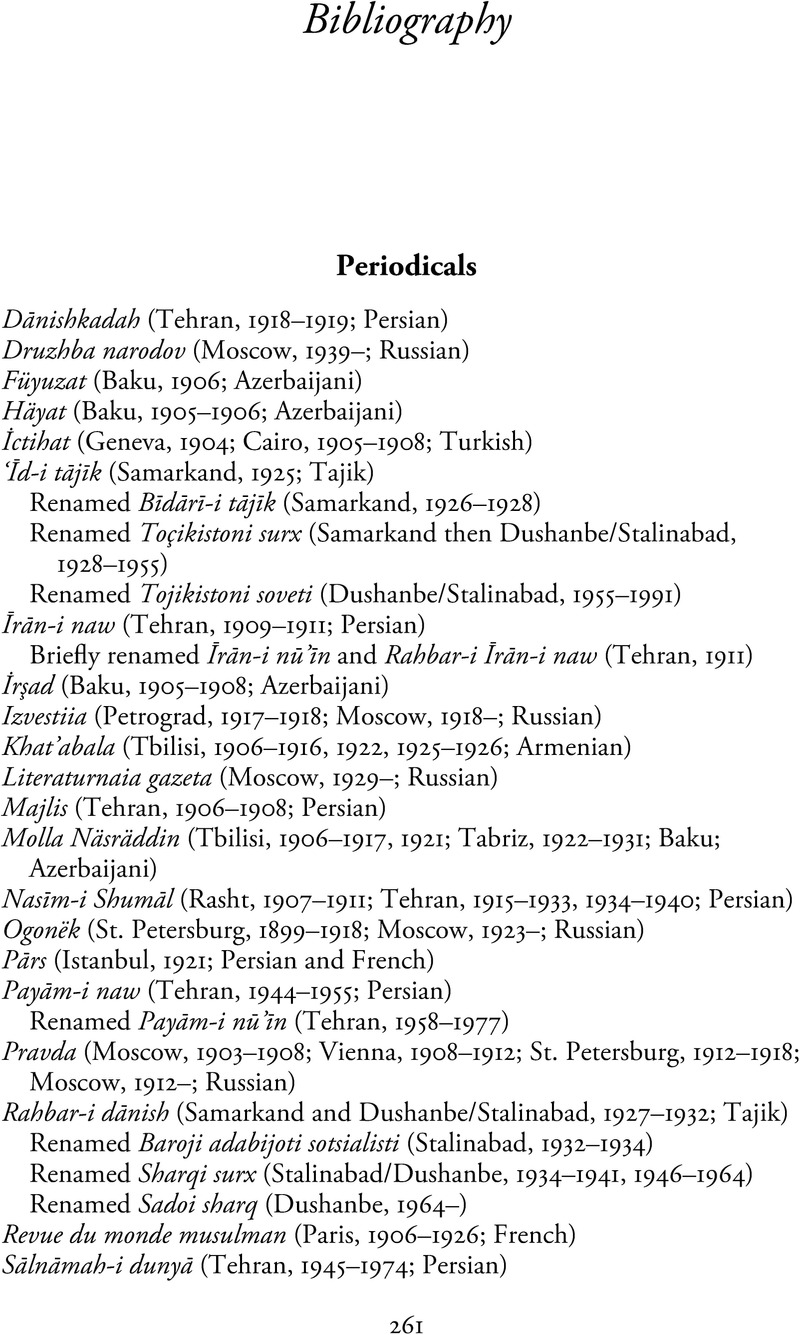Book contents
- Persianate Verse and the Poetics of Eastern Internationalism
- Cambridge Studies in World Literature
- Persianate Verse and the Poetics of Eastern Internationalism
- Copyright page
- Contents
- Figures
- Acknowledgments
- Technical Note: Translation, Transliteration, and Dates
- Introduction
- Chapter 1 Tribunes
- Chapter 2 Canons
- Chapter 3 Occasions
- Chapter 4 Translations
- Chapter 5 Recognitions
- Conclusion
- Appendix: A Commemorative Compendium (Tazkira) of Writers, Scholars, Bureaucrats, and Saints
- Notes
- Bibliography
- Index
- References
Bibliography
Published online by Cambridge University Press: 14 December 2023
- Persianate Verse and the Poetics of Eastern Internationalism
- Cambridge Studies in World Literature
- Persianate Verse and the Poetics of Eastern Internationalism
- Copyright page
- Contents
- Figures
- Acknowledgments
- Technical Note: Translation, Transliteration, and Dates
- Introduction
- Chapter 1 Tribunes
- Chapter 2 Canons
- Chapter 3 Occasions
- Chapter 4 Translations
- Chapter 5 Recognitions
- Conclusion
- Appendix: A Commemorative Compendium (Tazkira) of Writers, Scholars, Bureaucrats, and Saints
- Notes
- Bibliography
- Index
- References
Summary

- Type
- Chapter
- Information
- Persianate Verse and the Poetics of Eastern Internationalism , pp. 261 - 286Publisher: Cambridge University PressPrint publication year: 2023

